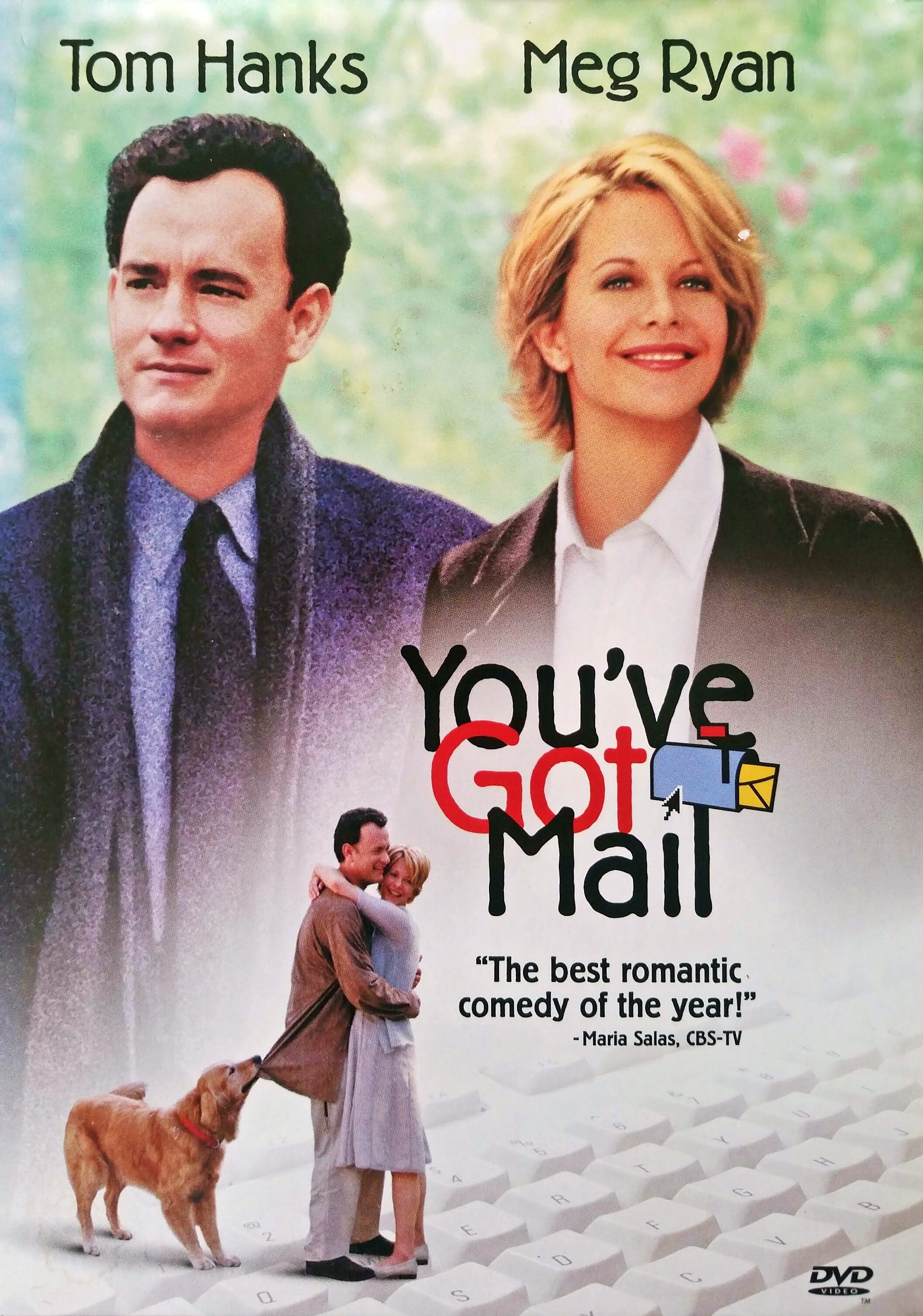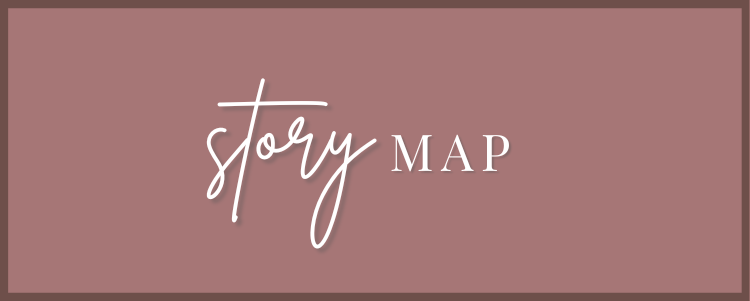How to Create a Midpoint Twist (Writing Emotion: Frustration)
The Writing Emotion series observes one emotion at a time in a story that does it well. This is so that we can understand better how to do our most important job as storytellers (no matter the genre): make readers feel.
The objective of these posts is less about learning to convey a specific emotion (joy, sorrow, anxiousness, etc.) and more about studying what is going on underneath a scene that makes the emotionality of it more compelling for the characters and the reader alike—
It’s about learning to write emotion.
Emotion: Frustration
Story: You’ve Got Mail
Frustration: the feeling of being upset or annoyed, especially because of inability to change or achieve something
Scene from the story:
I know this is a longer post than I typically deliver for this series, but trust me, it’s worth it. There is so much wisdom to gain from this seemingly simplistic scene.
Let’s go.
Lesson 1: Mini version of the main conflict
A huge chunk of this film centers around the struggle between Kathleen Kelly and Joe Fox. So it’s fitting that the conflict of this scene would do the same.
But let’s zoom even closer.
We have the larger conflict of the story (Kathleen vs. Joe in the war with their bookstores). And now, in this scene, we have them sitting down, face to face, ready to engage in a mini version of the conflict that has been heating up between them.
If this were a blog that was dedicated to surface-level breakdowns, that would be enough. The story as a whole is Kathleen vs. Joe, so now we see them in a unique situation where we get to pull at a single thread of the conflict between them. Boom. That’s a great starting point.
But there’s more going on here. There’s a reason this particular film is so beloved. Other threads are weaving beneath the surface to make this scene so satisfying.
The larger conflict between Kathleen and Joe, manifested on a smaller scale in this scene, is driving Kathleen toward her ultimate transformation.
In this moment, at the Midpoint of the story, Kathleen is finally able to do the thing she thinks she wants. She’s so thrilled with herself when she throws a clever zinger directly into Joe’s face. But then…it doesn’t feel good. She realizes that it may have been what she wanted, but in actually realizing that desire, she feels not only hollow, but horrible. (More on this in the next lesson.)The larger conflict between Kathleen and Joe, manifested on a smaller scale in this scene, is mirroring Kathleen’s larger transformation.
This may seem like a reiteration of what I stated in the first point above, but there’s a slight difference. And it can be found in the verbs: driving vs. mirroring.
Every scene should be driving your protagonist toward their ultimate transformation. They should be growing, changing, confronting, learning, and more every time they appear on the page.
But if you want to really make a scene land, you can not only drive your protagonist toward their ultimate transformation, you can mirror what they will learn via a mini-lesson. A lesson that isn’t quite enough to help them cast off their Lie and embrace their Truth (that comes at the Climactic Moment), but a lesson that offers both the protagonist and the reader a glimpse into the havoc their Lie is wreaking on their life.
(If you’re new here, the Lie is the harmful worldview your protagonist is clinging to throughout their story. The Truth is the lesson that will cause their ultimate transformation. It is a new, healthier worldview (that is, in a positive character arc - we’re not talking The Godfather here.)
So what mini lesson does Kathleen learn?
On a story-wide scale, Kathleen loves her bookstore and fights tooth and nail in order to keep it. But when she finally lets it go, while she does grieve, this actually allows her to grow into something better in both her personal (love life) and professional (writing a children’s book) life.
She learns that holding onto the idea of what she thinks she wants is not necessarily what is best.
That’s exactly what she learns in this scene, as well. Kathleen thinks that if she can just be more shark-like, more “it’s-not-personal-it’s-just-business,” then her life will be better.
But that’s not true. That’s not her. Kathleen is not a shark. She’s a nice person. And she has to be mean in this moment in order to learn that lesson about herself.The larger conflict between Kathleen and Joe, manifested on a smaller scale in this scene, is tapping into one of Kathleen’s primary starting emotions.
When I sit down to write a story, I like to come up with a short list of my protagonist’s starting and ending emotions. In other words, the emotions they typically deal with on a day-to-day basis before and after their transformation.
At the start of her story, Kathleen is not necessarily frustrated all the time. But she is resistant. Let’s take a look at the definition for both of these:
Frustration: the feeling of being upset or annoyed, especially because of an inability to change or achieve something.
Resistance: the refusal to accept or comply with something; the attempt to prevent something by action or argument.
See the similarities? They both come with trying, and failing, to change something.
Kathleen’s frustration bubbles to the surface so easily because she thinks she has the perfect life. She’s running her mother’s adorable bookstore; she has a boyfriend who, on paper, is an ideal match; she has great friends. She loves these things so much that she is completely resistant to the idea of exploring something further. She holds on so tightly that it begins to hurt.
Kathleen’s resistance in this scene morphs into frustration.
She can’t prevent Joe from sitting down and distracting her, either by action or argument. So she begins to feel upset and annoyed. She’s pushed. Right into her lessons and closer to her transformation.
Which is exactly what we want.
Frustration is the perfect emotion for Kathleen in this scene because it taps into her larger frustration in life. She wants to change something big happening in her world, but try as she might, she just can’t. Her ultimate transformation will come when she stops holding on so tightly and realizes the space, freedom, and joy that are available to her on the other side.
Take a look at your story’s midpoint scene in particular (though these questions could apply to any scene).
Is your protagonist realizing something about themself and what they think they want vs. what they need?
Is the emotionality of the scene mirroring the larger conflict of the story and the transformation your protagonist will ultimately undergo?
Is it driving them toward their transformation?
Is it a mini version of an emotion they have been grappling with on a larger scale up to this point?
What lies on the other side of that emotion? Is it something better?
How will they move through that emotion later in the story? (Will they have to let go of something, overcome something, etc.?)
Lesson 2: What you think you want vs. what you need
I touched on this in the previous lesson, but I think it bears repeating. Your protagonist will likely have to learn over and over again that what they think they want/need in life, is not what will be the best for them.
They will need to learn that it is not the path or thing that will offer the most growth or happiness.
So what do they actually need? In the previous lesson, I touched on how Kathleen needed to let go.
Is there something that your protagonist keeps trying to get?
I picture a gold necklace in a dark hole in the ground. Your protagonist knows it’s there, and they really want it. Maybe it even has deep sentimental value to them. But every time they stick their hand in the hole, they get bitten by something. At what point will they either look for a different and better way to retrieve the necklace, or let it go in favor of something that is actually better, more valuable, and more meaningful for them?
What is your protagonist’s gold necklace (metaphorically speaking) and what is the thing (also metaphorically speaking) that keeps biting them?
Lesson 3: Distracted
I’ve talked multiple times about the benefit of layering your scene with micro conflicts, obstacles, and points of tension. This scene offers another excellent example of these types of micro hurdles.
Kathleen Kelly is distracted.
Her conversation with Joe keeps getting interrupted because she’s waiting for someone to arrive (little does she know he’s already there). Every time the door opens, it offers an opportunity for heightened tension, and her distraction gives the scene’s emotionality greater depth.
All of this offers the writer more to grab hold of:
A man in costume can walk in.
Two old ladies can come next.
The waiter can ask what Joe would like.
These are opportunities for humor, texture, atmosphere, and more.
Is there a scene in your story where a little distraction could go a long way?
Could it offer more tension and intrigue?
How do the other characters in the story react to your protagonist’s distraction? (Joe not only plays along with Kathleen’s distraction, it opens him up to a whole new set of emotions. Perhaps a little guilt, a bit of humor, and maybe even some schadenfreude.)
Is there a way you can get playful and creative with this distraction? (Side characters, setting, etc.)
Bonus Lesson: Clear Goal
A scene is better when the protagonist has a clear goal.
Not only that, but any scene without a clear objective, probably does not even belong in the story. If the character isn’t trying to get or achieve something, then what’s the point?
Here, Kathleen has a very clear goal: she wants to meet her online pen pal.
She also has a very clear obstacle: Joe is bugging her.
Every scene I’ve analyzed here on the blog had a goal. But I just wanted to drop a reminder here (because I still forget more often than I’d like to admit) that you should make sure that every one of your story’s scenes has a clear objective, clear stakes, and clear conflict getting in the way of what your scene’s protagonist is trying to achieve.
If you can accomplish those 3 things, more likely than not, you’re starting with a solid foundation.
Want more insight into behind-the-scenes story magic & writing emotion? Click on one of the buttons below.
Ready to outline an emotional and transformative story?
In The Emotion Outline, you’ll learn the 3 steps that go into every great story, and fill in a step-by-step template that will get to the beating heart of your own work-in-progress.





